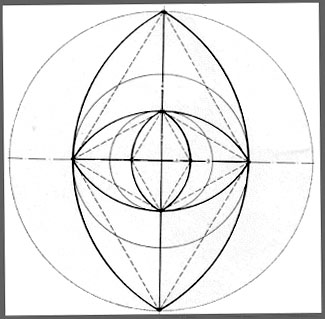
I recently watched Sydney Pollack's documentary"The Sketches of Frank Gehry" about the man who designed the Guggenheim museum in Bilbao, Spain. Like the other Frank, who designed Fallingwater, the NY Guggenheim and (in my neck of the woods) the Marin Civic Center, Gehry creates structures that are iconic, sculptural and indisputably impressive. But I often wonder at the appeal of this kind of architecture. About its purpose for existing. Whether it can or should harmonize with it's environment. The Bilbao was built to house art but also to attract attention to it's city, in which it succeeds. But does it serve the needs of the humans who use it? The museum seems almost a distraction from and awkward for the purpose it exists to fill.
I've always secretly felt this way about Frank Lloyd Wright's buildings. They are definitely beautiful in that they are visually bold and modernly minimalist, full of natural materials with a consistency of form and vision from the overall floorplan to ornamental details. But at the same time they are strangely unappealing. Uncomfortable, angular and imposing with all the heavy beams and nerve-wracking patterns. Complete unto themselves, his spaces offer no sense of invitation. God forbid I should toss a throw pillow into a Frank Lloyd Wright tableau and ruin the effect. In other words, I wouldn't want to live in one. The impersonal quality of his architecture does seem better suited to public spaces. Frank Gehry's, too.
So, seeing footage of Gehry's Guggenheim (pictured here) I am curious how it would feel to live with such an overpowering presence on the periphery or what it's like to approach it and enter. The Project for Public Places lists the museum in its Hall of Shame based on it's failure to support human activity in and around the building. Lack of clear entrances, cumbersome stairways, dead open spaces with no seating or amenities, few growing things, nothing restful for the eyes. Essentially, uninviting. So even as it triumphs as an epic sculptural manifestation, a visually riveting man-made mountain, it fails to acknowledge us, the wee peeps, as anything more than admirers.
Balancing out the more oppressive facets of architecture with some humane features that serve and invite would be wholly worthwhile. Folding in more of the building theory a la Christopher Alexander's "A Pattern Language", paying attention to where sun shines and people gravitate, planting more trees, building more benches, encouraging folks to tarry and talk, designing spaces that can be used creatively by all of us so that we not only visit grand structures, we identify with them and love them.

1 comment:
God forbid I should toss a throw pillow into a Frank Lloyd Wright tableau and ruin the effect. In other words, I wouldn't want to live in one. The impersonal quality of his architecture does seem better suited to public spaces.
I, too, have always been put off by the impersonal quality. I don't know that it necessarily works better in a public space -- some of the best public spaces do have a personal quality that enlivens the space. That is certainly a theme in Christopher Alexander's philosophy, as you note.
Post a Comment